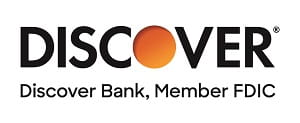The Free Application for Federal Student Aid (FAFSA®) is your key to accessing financial aid. This application is used by the U.S. Department of Education’s Federal Student Aid program to determine your eligibility for federal aid. On top of that, many states, colleges, and universities rely on FAFSA information to offer their own financial aid programs. Filling it out can open doors to grants, scholarships, and more to help cover your college costs.
Federal student aid programs provide access to federal grants, federal loans, and federal work-study opportunities. Additional aid from external sources such as state or institutional programs may differ but could encompass grant and loan options as well.
You don’t need to wait until you decide on which school you will be attending; your information can be sent to multiple schools.
This guide will focus on the 2025-2026 FAFSA application.
Even if you don’t believe you are eligible for financial aid, you should complete the FAFSA. It’s a myth that all financial aid is need-based.
- FAFSA is the federal student aid application used to secure federal, state and school funding for your post-secondary education.
- The application is available as an online or paper form. Online completion and submission is recommended.
- To prepare, you should have the following documents ready: social security number(s), tax information, and bank records.
- Students, FAFSA Parents, and FAFSA Contributors must create an FSA ID which serves as your legal signature and is needed in order to sign the FAFSA application electronically.
- Student’s who are required to provide parent information are required to have themselves and their parent sign the application for submission.
- Students should complete their FAFSA as early as possible to maximize their chances of receiving aid.
- The 2024-2025 FAFSA has significant changes to the questions and method of completion due to the FAFSA Simplification Act.
- The full version of the 2025-2026 FAFSA was released in late November 2024.
When Does the FAFSA Need To Be Filed
The FAFSA is not only used by the federal government, but it’s also used by states and schools to help award financial aid. When it comes to filing the FAFSA, there are three deadlines you should know.
- State Deadline
- School Deadline
- Federal Deadline
For more details about FAFSA deadlines, check out our great resource which provides detailed state deadline information.
Which FAFSA Do I Fill Out?
This isn’t always clear. Depending on the time of year, there could be two FAFSA applications to pick from. Make sure you complete the FAFSA for the correct year!
- The 2025-2026 FAFSA is for students who will be attending college between July 1, 2025 and June 30, 2026. We will be focusing our information on this FAFSA.
- The 2024-2025 FAFSA is for students who will be attending college between July 1, 2024 and June 30, 2025.
Check out our deadlines article for help with determining which FAFSA is right for you. When in doubt, ask your Financial Aid Office.
What Do You Need to Fill Out the FAFSA?
There are a few things you want to get together before you get started with the FAFSA application. It’s always best to be prepared. Here is what you should have ready before you jump into the application.
Create FSA ID
You can set up your FSA ID. You can create an FSA ID ahead of time, you don’t need to wait until you are ready to complete the FAFSA. If you don’t have an FSA ID, the process may take a few days, so it’s recommended you do this ahead of time. Think of your FSA ID as a username and password, because that’s what it is. Your FSA ID allows you to file the FAFSA online, and log into view your federal student loan and grant history. You can also use it to electronically sign your FAFSA, and it is your personal legal signature.
Anyone who will provide information on student’s FAFSA will need an FSA ID. In the past, parents, step-parents, and spouses could provide their information while the student was logged into their form. However, beginning with the 2024-2025 FAFSA, everyone providing information or electronically signing the FAFSA will need their own. This year, each FAFSA Contributor will need their own FSA ID. Even FAFSA Contributors without social security numbers will be required to create an FSA ID to complete the student's FAFSA.
MORE>>>U.S. Department of Education's Creating a Student Aid Account: FSA ID Guide
It is strongly recommended that everyone create their own individual FSA ID to avoid issues later. Your FSA ID will be used for future FAFSA applications and can be used to help you manage your student loan borrowing, and track your federal grant history. If you don’t know your credentials, and/or your parent tied your FSA ID to their email address, it may be frustrating to change your password to use it in the future. If you forget your FSA ID, or it’s not working, you will have the option to click “Forgot My Username” or “Forgot My Password”. If you need more help getting into your account, you can always reach out to the FSAICinfo at 1-800-4-FED-AID (1-800-433-3243).
FAFSA Contributors
Potential FAFSA Contributors for a Dependent Undergraduate student may include:
- The FAFSA parent(s)
- The FAFSA parent's spouse
Potential FAFSA Contributors for an Independent Undergraduate or Graduate student may include:
- The student's spouse
FSA ID Parent and Contributor
Each person who needs to provide information for a FAFSA will need their own FSA ID—this means, not only students but parents may need their own FSA ID as well. An FSA ID will be associated with the social security number of the account holder.
You will need a social security number (SSN), and a mobile phone number and/or email address. However, beginning December 2023, parents or contributors who do not have an SSN will be able to create an FSA ID. This will allow more student and parents the ability to complete and submit their FAFSA electronically. A parent without an SSN can use this FSA ID to complete the 2025-2026 FAFSA.
Each FSA ID will be associated with the account holders SSN, mobile phone number, and/or email address. If you happen to have a shared email address, only one FSA ID can be associated with that email address. The same goes with a mobile phone number, it can only be associated with one FSA ID.
Documents Needed for FAFSA
- Your FSA ID if you are completing your FAFSA online or through the mobile application.
- Your 2023 Tax Records for the 2025-2026 FAFSA
- Records of Untaxed Income, including, child support received
- Records of Your Assets
- A List of Schools You Are Considering
FAFSA School Selection
You don’t need to know exactly where you want to go yet, and you can even make changes later. But you should pull together a list of all the schools you are interested in, even if you have yet to apply.
The FAFSA gives you an opportunity to easily list 20 colleges at a time on the web. Your school list will not be shared with the schools you list.
FAFSA School Selection Order
For federal student aid it doesn’t matter in what order you list your schools. However, for state aid it might. Double check you state requirements and decide the best way to order your school list.
FAFSA Change School
It’s okay if you’re applying to more than 20 college. Pick 20 to list first. Wait for your FAFSA to be processed, it could take a bit of time. The best way to confirm, contact a school you listed and ask them if they received your FAFSA information. Once they have confirmed, log back into your FAFSA application and update your school list.
Financial Aid Help
With everything that you are managing on this college journey, you may not be aware that there are FREE RESOURCES available to provide help and guidance along the way or if you run into problems.
Financial Aid Eligibility
There are some eligibility criteria you need to meet in order to qualify for federal student aid:
- Complete the FAFSA and agree to use federal student aid for educational purposes.
- Be a U.S. Citizen or eligible non-citizen.
- Have a valid Social Security number (with the exception of students from the Republic of the Marshall Islands, Federated States of Micronesia, or the Republic of Palau).
- Be enrolled, or accepted for enrollment, as a regular student in an eligible degree or certificate program at a college or university that participates in federal student aid.
- Have a high school diploma, the recognized equivalent of a high school diploma** (including a General Educational Development (GED) certificate), or have completed a high school curriculum in a home school setting that satisfies the state’s requirements for home schooling.
- **Students who first enrolled in an accredited college or career school before July 1, 2012, or are enrolled in an eligible career pathway program, may qualify by satisfying alternate criteria, such as passing an approved ability-to-benefit test or completing six credit hours or equivalent course work toward a degree or certificate.
- Not be in default on a federal student loan.
- Not owe a refund on a federal student grant or loan overpayment.
- Maintain satisfactory academic progress.
- Provide consent and approval to have your federal tax information transferred directly into your FAFSA. Your FAFSA Contributors must also provide consent and approval.
- Students with intellectual difficulties may still be eligible for federal student aid. You need to be enrolled in a comprehensive transition and postsecondary (CTP) program, meet all basic eligibility requirements, except for the requirement of a high school diploma or GED, and you aren’t required to pursue a degree or certificate.
There are some more program specific requirements for federal student loans and grants.
Note: If you do not meet these criteria, ask your school if they would still like you to complete the FAFSA®.
Federal Student Loan Eligibility
In addition to the basic eligibility requirements, federal student loans require you to be enrolled in your program at least half-time. The Direct Subsidized and Direct Unsubsidized Loan program has loan limits for the total you can borrow each year, and total aggregate (overall) limits. If you’ve reached annual or aggregate borrowing limits in the federal program, you may need to consider private student loan options.
Federal Pell Grant Limits
Under the Federal Pell Grant program, you will be limited to the equivalent of six years of Pell Grant funds, or 600% lifetime eligibility. What does this mean? Well, if you are Pell Grant eligible your school will determine your total award amount for the year. That total amount is considered 100% of your eligibility for that year. The actual amount you receive throughout the year will be used to determine your use.
For example, if you are awarded $5,000 for an award year. Your school will give you $2,500 for your fall semester, and $2,500 for your spring semester. You attend during the fall and receive your $2,500 award. You are then unable to attend spring semester, and do not receive financial aid. You would have only used 50% of your Pell lifetime eligibility.
Is FAFSA Required for College Applications
You are not required to complete the FAFSA to apply for admission to colleges and universities. In some states you may be required to complete the FAFSA to graduate from high school—regardless of your future plans. For other students, you will only complete the FAFSA if you need financial aid to help you pay for school, and your school participates in federal student aid. You can always double-check your school’s policies to determine what is expected of you.
Financial Aid Eligibility Graduate School
Graduate students or professional students are eligible to receive federal student aid. Graduate or professional students will not be eligible for need-based federal aid (like the Federal Pell Grant, or Direct Subsidized Loan), but will be eligible for Direct Unsubsidized Loans and Direct PLUS Loans. States and schools may also offer additional aid opportunities to graduate or professional students.
Filling Out the FAFSA – Step-by-Step
Ready to jump in? You will get through it, promise. Here are some words of advice, take your time and read each question carefully.
Each question on the electronic versions of the FAFSA will have a ‘?’ mark. If you click the ‘?’ you will get additional information to help you answer the question. The paper application will also provide additional details for each question in the accompanying pages provided.
Another important note, the FAFSA application belongs to the student. References to “you” mean the student. The FAFSA will identify when parent information is being requested.
Choose a Method to File
You have two options:
- FAFSA online application
- Paper FAFSA Application.
- 2025-2026 FAFSA Application (English)
- 2025-2026 FAFSA Formulario - Solicitud Gratuita de Ayuda Federal para Estudiantes (Español)
- You can always request a print-out to be mailed to you from the U.S. Department of Education by calling 1-800-4-FED-AID (1-800-433-3243)
It is highly recommended that you complete the application online or through the mobile app because they offer a customized experience. You don’t need to complete the online versions in one sitting, you can create a “Save Key” which you can use to take breaks or share with your parents to help complete the application.
Consent and Approval of Federal Tax Information Transfer from IRS
Beginning with the 2024-2025 FAFSA, the FAFSA Applicant and all FAFSA Contributors will be required to provide consent for federal tax information (income and tax information) to be transferred directly into the FAFSA form from the Internal Revenue Service (IRS) through the Direct Data Exchange. This will be a requirement for the 2025-2026 FAFSA. Once you provide consent, you are also providing consent to reuse your federal tax and income information for other FAFSA forms you’re invited to complete as a FAFSA Contributor (for example, a parent with multiple children). Consent and approval is required to qualify for federal student aid – however, the electronic application may allow you to proceed, you would just be submitting your information to your school for other types of non-federal aid.
If consent is not given by each FAFSA Contributor, the student will not have an SAI calculated. This will make them ineligible for federal student aid, including loans and grants. Consent and Approval is required for the transfer of federal tax and income information from the IRS into a FAFSA application. It does not matter if a FAFSA Applicant or FAFSA Contributor did not file a U.S. tax return, or if they did not file taxes.
There may be instances where you will be triggered to input your tax information manually. There are a few scenarios that are common, such as a then-married couple who filed their taxes jointly for the base year (for the 2025-2026 FAFSA, the tax base year will be 2023), and are now divorced at the time of completing the FAFSA. And for individuals who file foreign tax returns, those would need a manual entry. In these situations, answer the questions presented on the FAFSA. If you are not able to provide tax information or run into any issues, it’s best that you contact the financial aid office.
FAFSA Student Demographics
Read each question carefully and provide the requested information. One thing to look out for in this section. Make sure your name matches what is on your social security card.
Invite FAFSA Contributors
Once your dependency status is determined, your FAFSA will give you the opportunity to invite FAFSA Contributors to help you complete your FAFSA application. You can input your parent or spouses’ information to send them an email invitation. MAKE SURE the email address you input matches the email address associated with their FSA ID. At the very end of the application process, you will see a list of your FAFSA Contributors. If you need to edit the list, you can do so at that time.
The email invite will allow your FAFSA Contributor to begin inputting information into your FAFSA form. Each contributor will need to provide consent to the federal tax information transfer, as well as sign and complete their portion. Once all FAFSA contributors complete their sections, your FAFSA submission will be complete.
How to Add Schools to FAFSA
Remember that school list you put together, now it’s time to input your schools into the FAFSA. The schools on this list will be sent your FAFSA information. Unless you have your school’s federal code (it’s okay if you don’t) you will start to look up each school by location and name.
*You can always look up your federal school code if you’re having trouble finding your school through the search feature on the FAFSA.
The 2025-2026 FAFSA electronic application will allow you to enter up to 20 schools at one time, and up to 10 schools on the paper application.
FAFSA Dependency Status
The FAFSA will now ask you a series of questions to determine if you are a dependent or independent student for FAFSA purposes. Your FAFSA dependency status is not related to how you or your parents file your taxes, and it does not matter if you rely on your parents for financial support or not.
Undergraduate students can be classified as either dependent or independent. All graduate or professional students will be classified as independent students.
We know dependency status is an area of confusion, so we broke down what you need to know about FAFSA dependency status, dependency overrides and requests for professional judgement.
FAFSA Parent Demographics
If the FAFSA classifies you as a dependent undergraduate student, you will be required to provide parental information. For some it’s easy to determine whose parent information to provide, for others it may not be. Some students classified as a dependent undergraduate student may be concerned about your parent’s ability or willingness to provide you with the necessary information.
Click here if you need help determining who your FAFSA parent is or have other concerns with providing parental information.
FAFSA Household Size
Family size is an important factor in determining your financial aid eligibility. The 2025-2026 FAFSA will use the IRS tax information received to initially determine your family size, thus family size should correspond with the number of individuals reported as dependents on the applicant’s (if independent) or applicant’s parents’ (if dependent) U.S. tax return. However, you will have the option to make updates to your family size.
If you are a dependent undergraduate student, the family size question will be presented to your parent.
FAFSA Number in College
When completing your family size, you will be asked how many members of the family will be attending college. They will ask you to include the student (the owner of the FAFSA), and anyone else except parent(s). Make sure you indicate this appropriate. Even though this question is being asked, this will no longer offer a “discount” or “split” the SAI for the student among their siblings.
While there are no guarantees, a student may be able to discuss their situation with your financial aid office after submitting the FAFSA. The financial aid office will evaluate the situation and determine if any changes should be made to the student's SAI or cost of attendance by issuing a professional judgement decision. This decision would be at the discretion of the school, and the decision is final.
What Financial Information Do You Need to File FAFSA?
If you’re a dependent undergraduate student, you will need to provide your own financial information and the financial information of your FAFSA parents. If you’re an independent student, you will be required to provide your own financial information, and the information of your spouse if you are married.
The FAFSA will ask you to report income and asset information.
Review Your Responses
Before you sign and submit your sections of the FAFSA, you will be given an opportunity to review the responses provided. It’s best to careful review those before going on to submit your portion. It’s easier to make changes before submission than after.
As a note, your federal tax information transferred will not be visible to you in the FAFSA Submission Summary. You will be able to request a disclosure of your own federal tax information from the U.S. Department of Education, you will not be able to view the tax information of any other individual, including the FAFSA applicant or FAFSA contributor. If you had any issues with your tax return or filing, you must contact your financial aid office to discuss those issues. If you, or a FAFSA Contributor, had a significant change in income since their 2023 filing, they need to discuss those issues with your financial aid office. It’s at the discretion of the school to make changes or updates to the information they received on your FAFSA.
How to Sign and Submit FAFSA
If you do not have any FAFSA Contributors, you can sign and submit your application once you answer all the applicable questions.
If you have multiple FAFSA Contributors (i.e., parent(s) or spouse), you will need to wait for all FAFSA Contributors to complete their applicable sections, and then sign and submit their sections. Since the web-based 2025-2026 FAFSA requires all FAFSA Contributors to have an FSA ID, they will be able to sign once they complete their applicable section. The 2025-2026 electronic application will not allow you to print and submit your signature page. In addition, financial aid administrators will no longer be able to submit FAFSA signature forms on behalf of students.
You and each FAFSA Contributor will have the option to track the status of your FAFSA. Remember to (politely) nudge your FAFSA Contributors if you are waiting for them to complete their sections. If possible, it may be worth it to work on your application together.
When it comes to those filing a paper FAFSA, the student, and if applicable FAFSA parent and/or FAFSA Contributors must all provide wet signatures and mail the paper FAFSA to the address listed on the application.
FAFSA Confirmation Page
Upon signing your FAFSA, you will be sent to a confirmation page. If you are waiting for additional FAFSA Contributors to complete their sections, you will be told that your section is signed and complete, however you need to wait for all contributors to complete their section.
If you indicated an unusual circumstance with providing parental information, you may have been given a provisional student aid index (SAI), and you will be instructed to contact your financial aid office. In this scenario, you will need to provide your school with additional information or paperwork to confirm your unusual circumstance that would qualify you for a Dependency Override.
FAFSA Submission Summary
The FAFSA will take one to three days to process once submitted electronically. Upon processing, you will receive an email with your SAI and instruction to access your FAFSA Submission Summary. Your FAFSA Submission Summary will be organized by four tabs: Eligibility Overview, FAFSA Form Answers, School Information, and Next Steps.
In the FAFSA Form Answers tab, you will be able to review all the answers you, the applicant input into the FAFSA, with the exception of tax information transferred from the IRS.
In the Eligibility Overview, you will be presented with your SAI and an estimate of your federal student aid eligibility. This “estimate” is not your financial aid award from your school(s), and it may not be the actual award you receive.
In the School Information tab, you will be able to see the schools you listed on the FAFSA. If you added 20 schools to your FAFSA, and you have more schools to add, give it a few days before you log in and update your school. Financial aid award letters will be sent to the student by each school where they are admitted.
The Next Steps tab will help you understand what you can expect from this point, and how to make corrections or changes if needed.
Student Aid Index (SAI)
Upon successful submission of your 2025-2026 FAFSA, you will receive a SAI in your Submission Summary Your SAI is an index number which can be as low as -1500. This number is an index number for your school to determine your financial aid eligibility. The lower the number, the greater financial need you have.
If you are concerned with your SAI, or you/FAFSA Contributors had a significant change in income since the filing of your 2023 taxes, it’s best to discuss your situation with your financial aid office. You may be able to request a financial aid appeal.
What Do You Receive After You Submit the FAFSA?
Typically, it will take one to three days for your FAFSA to process after its successfully submitted electronically. Upon processing, you will receive a FAFSA Submission Summary and your SAI.
If you don’t get your FAFSA Submission Summary, you want to reach out to the U.S. Department of Education 1-800-4-FED-AID (1-800-433-3243), or log into your federal student aid account to check the status of your FAFSA.
How to Make Corrections to Your FAFSA After Submitting
If you realize there is an error in your FAFSA Submission Summary, don’t panic. There are steps you can take to correct the information.
FAFSA Corrections
You can go back into your electronic application to make a correction, update, or an adjustment. You can make some corrections and updates on your own. However, if you need an adjustment you will need the help of your Financial Aid Office. If there is a mistake that you aren't given an option to fix, you need to contact your financial aid office for assistance.
Common types of FAFSA corrections:
- Updating an email address, mailing address, or other contact information
- Fixing visible typos – except for issues with your social security number and name matching. That may require the help of your Financial Aid Office.
- Adding or removing college
What Happens After I Submit My FAFSA?
The information you provided on the FAFSA will be sent to the schools you listed on your FAFSA. They will take that information to determine your financial aid offer.
If you’ve been accepted to multiple schools, your will receive multiple financial aid packages. As you receive the packages, you need to review the aid offered from each school. You want to determine the type of financial aid you’re being offered, and how much you would have to pay out of pocket to attend each school.
Why Did I Not Qualify for Financial Aid?
Remember, schools classify student loans as financial aid. Depending on your school’s cost of attendance, adjusted gross income, and your SAI, you may not be eligible for need-based financial aid.
However, if you’re not seeing any federal student aid (like Direct Subsidized Loans, Direct Unsubsidized Loans) on your financial aid offer, you may want to reach out to Financial Aid Office. You want to confirm they received your FAFSA information and you completed all necessary steps to receive financial aid.
I Didn’t Get Enough Financial Aid
After you completed all required financial aid forms you realize you still need more financial aid, all hope is not lost. You want to look into filing a financial aid appeal with your school. There are several reasons why someone may ask for additional financial aid. We break down this process to help you file a financial aid appeal with your school.
Common FAFSA Mistakes
There are some common FAFSA mistakes, but don’t worry, there are ways you can avoid or fix these issues.
Lost FSA ID Password
There can only be one FSA ID per social security number.
Students! Don’t rely on your parents to make one for you. They may help you through your first few years completing the application, but you will need these credentials for years to come. You’ll need your FSA ID if you’re applying for financial aid in graduate school, or to log in and see your federal student loan portfolio or federal grant history. Also, don’t make one for your parent’s they will need to make their own.
Parents! Don’t just make one for your child to make the process easier. If they need their credentials and you’re unavailable, it may be challenging for them to reset their password if they don’t know the information to recover it.
What Happens if You File the FAFSA Late?
You don’t want to miss any deadlines. If your state awards financial aid on a first-come, first-served basis from the FAFSA release date, then you want to file it as soon as possible.
Can I Still Submit My FAFSA After the Deadline
If you’ve missed a school or state deadline, you can still file the FAFSA. You may be out of the running for state and school financial aid, but you will still be eligible for federal student aid.
If you’ve missed the federal deadline, then you won’t be able to file the FAFSA for that award year. Talk to your Financial Aid Office if you are getting close to the federal deadline.
Ignoring FAFSA Verification
If you’ve been selected for FAFSA Verification, you should expect to hear from your school. Your school will ask you to verify certain information you reported on the FAFSA.
Do not ignore your schools request! If you fail to provide the requested verification information, your financial aid could be delayed.
Learn More About Federal Student Aid
Student Parent Financial Information











